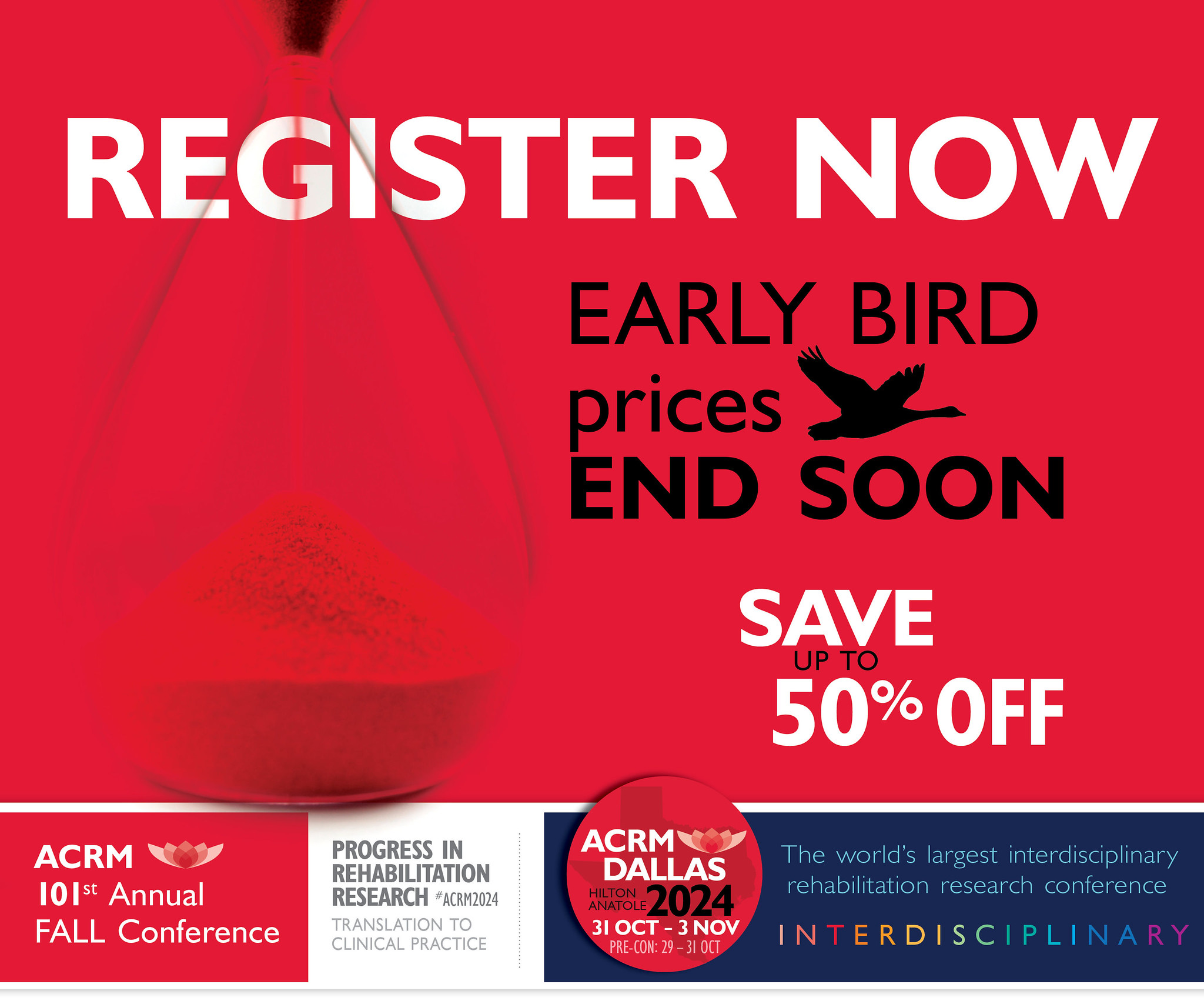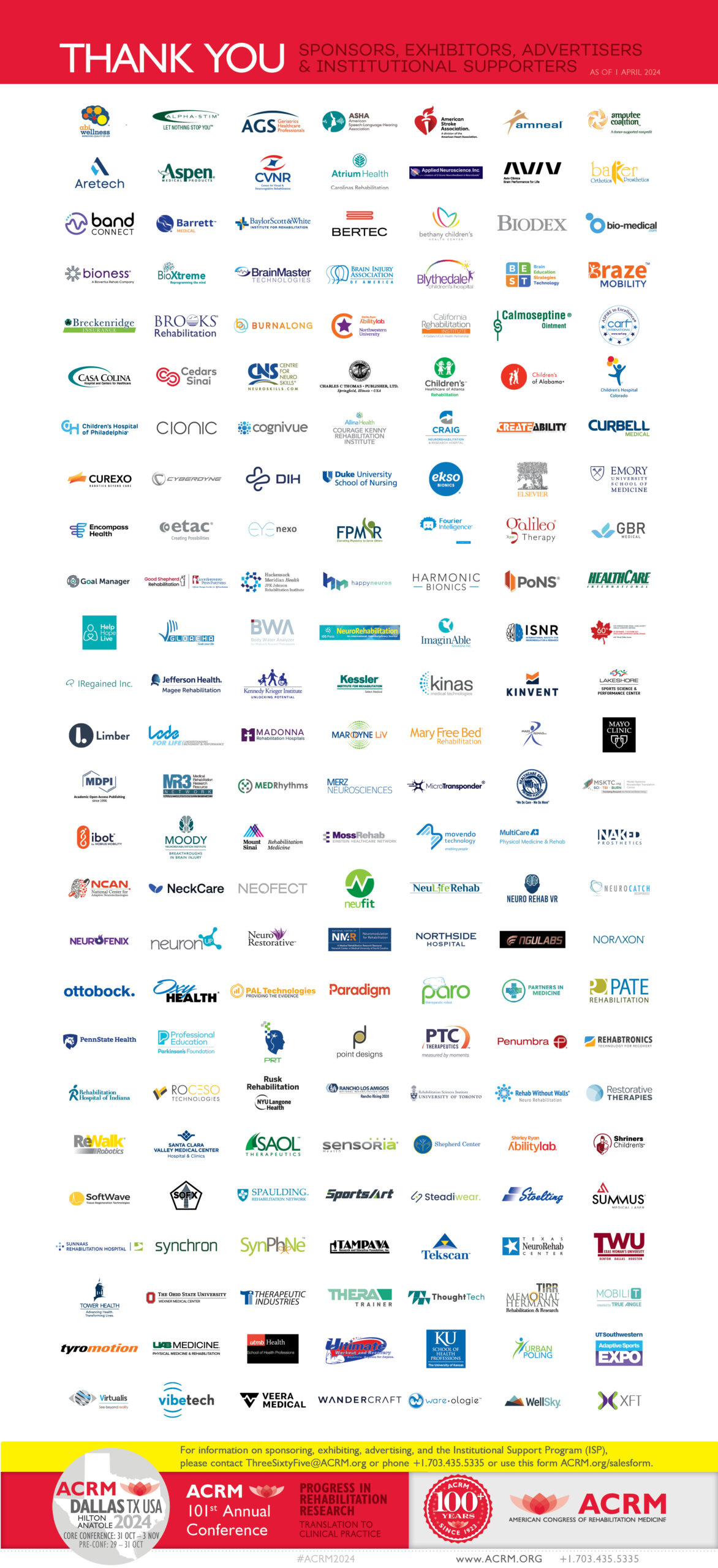INSTRUCTIONAL COURSE DETAIL
TUE, 26 OCT: 8:00 AM – 12:00 PM
PRESENTERS
Benjamin Nguyen, MD
Associate Professor-PM&R at UT-Southwestern Medical Center
Patricia Krohn, NP
UT-Southwestern Medical Center, PM&R Department
Patricia Gordon, NP
UT-Southwestern Medical Center, PM&R Department
Tony Whitworth, MD
Associate Professor-Neurological Surgery at UT-Southwestern Medical Center
Reza Farid, MD
Associate Professor-PM&R at University of Missouri
Stuart Yablon, MD
Associate Professor-PM&R at University of Edmonton
Sandy Hall, PT, DPT
UT-Southwestern Medical Center
Karen McCain, DPT
Associate Professor at UT-Southwestern Medical Center
DIAGNOSIS
Diagnosis-independent; neurodegenerative disease (e.g., MS, Parkinson’s disease); brain injury, stroke, spinal cord injury, cerebral palsy, spasticity
FOCUS
Clinical practice (assessment, diagnosis, treatment, knowledge translation/EBP)
Training/instruction in new knowledge/skills (attendees will develop new competencies that can be applied in practice or research)
BRIEF DESCRIPTION
Intrathecal baclofen in the management of spasticity: challenges and opportunities, developing a multidisciplinary program to improve patient outcome
ABSTRACT BODY
Intrathecal baclofen in the management of spasticity: challenges and opportunities
Spasticity is associated with numerous and diverse neurologic conditions such as stroke (CVA), brain injury (BI), spinal cord injury (SCI), multiple sclerosis (MS), and cerebral palsy (CP). Untreated or sub-optimally treated, spasticity can lead to pain, development of contractures, skin breakdown, increased energy expenditure, difficulty with hygiene, prevention of restful sleep, and even hip dislocations. First introduced by Penn and Kroin in 1984, intrathecal baclofen (ITB) represents a major treatment armamentarium for these debilitating conditions, with more than 80,000 ITB pump implanted to date. For those patients with severe spasticity of cerebral or spinal origin who are sub-optimally responsive to other treatments, ITB can play an invaluable.
Intrathecal baclofen, though extremely effective in the management of severe spasticity of cerebral or spinal origin, is not without adverse effects, and potential complications from ITB are well documented. This includes patient/care-giver/care provider errors (missed appointments, errors in programing/refilling), suboptimal implantation techniques, infections, catheter/pump malfunction, or loss of efficacy. Despite all the risks, ITB nonetheless represents a superior and effective management option in patients with severe spasticity refractive to other treatments, as demonstrated by patients and caregiver’s satisfaction, and potential overall cost savings.
The purpose of this educational track is to highlight important components of a successful ITB practice. This requires a multi-disciplinary approach involving many different specialties, akin to many spokes on a bicycle wheel, where each plays a critical role to assure proper functioning. The process starts with understanding the importance of Team Building, patient selection criteria for ITB therapy including using the appropriate screening test, and incorporating strategies for enhancing spasticity management practices such as ITB programming. This course will also touch on different surgical techniques used for ITB implantation, discuss potential ITB complications and trouble-shooting techniques/algorithm, safety, neurophysiological evaluation of ITB response, as well as review cost effectiveness of ITB therapy for patients with severe spasticity. The conference will wrap up by optimize patient outcomes through patient case study discussions.
The challenges of having a successful ITB practices are outweighed by the opportunities to bring superior patient care to those most in need. Upon completion of this track, it is our hope that the issues raised will serve as foundation for which Health Care Providers can continue to build on to better recognize, assess, and manage those with severe spasticity issues hindering their quality of life.
LEARNING OBJECTIVES
- Understand the importance of team building to assure success in ITB Therapy
- Gain broader understanding of patirnt selection criteria for ITB Therapy (CVA, MS, SCI, TBI, others). Utilizeingthe screening test as diagnostic tool for determining which patients are apropriate for ITB Therapy
- Incorporate strategies for enhancing spasticity management practices, including ITB programming. Optimize patient outcomes through patient case studies.
- Discuss surgical techniques used for ITB implantation, discuss potential ITB complications and trouble shooting techniques/algorithm
- Review cost effectiveness of ITB therapy for patients with severe spasticity
INTENDED TARGET AUDIENCE
Neurologists, Neurosurgeons, Physiatrists, Radiologist, Surgeons, Nurses, Nurse Practitioners, Physical Therapists, and other Allied Heath professionals interested in the treatment of severe spasticity with intrathecal baclofen (ITB)
BIO SKETCHES
Fatma Gul, MD
Dr. Gul is a Professor of PM&R at University of Texas at Southwestern Medical Center. She is board Certified in Physical medicine and Rehabilitation. She is also Medical Director of Outpatient PM&R Clinic and Parkland memorial Hospital Spasticity Clinics. She has more than 20 years of experience treating patients with ITB.
Benjamin Nguyen, MD
He is an associate Professor and Brain Inury Fellowship Director at University of Texas Southwestern Medical Center, He is Board Certified in PM&R and Brain Injury. He is also a member of the Student Admission Committee at UTSW Medical Center.
Patricia Gordon, NP
She is associate faculty at PM&R Department in University of Texas Southwestern Medical Center. She has worked at Multiple Sclerosis Clinic prior to joining PM&R Department.
Patricia Krohn, NP
An associate Faculty at University of Texas Southwestern Medical Center. She has strong Internal Medicine background and more than 20 years treating adult and pediatric patients with ITB.
Joe Urquidez, MD
He had fellowship in Brain Injury and is a Board Certified in Physical Medicine and Rehabilitation and had Fellowship in Brain Injury. He has Private Practice limited to Spasticity Management and Brain Injury at Austin Texas.
Stuart Yablon, MD
He is a Board Certified in Physical Medicine and Rehabilitation and had Fellowship in Brain Injury. He is presently working at University of Alberta. Division of Physical medicine and Rehabilitation. Dr. Yablon has published extensively and written book chapters in Spasticity Management and Intrathecal Baclofen Therapy.
Reza Farid, MD
Heis Board Certified in Physical Medicine and Rehabilitation and Pediatric Rehabilitation. He is an Associate Professor at University of Missouri and has more than 12 years experience treating patients with ITB.
Karen McCain, PT, DPT, NCS
Dr. McCain is an Associate Professor in the School of health professions and Associate Medical Director of the David M.Crowley Research and Rehabilitation Laboratory at the University of Texas Southwestern Medical Center in Dallas, Texas. She maintains clinical practice with focus on gait recovery in persons with neurologic injuries. Her research interests include gait recovery after stroke as well as the impact of orthosis on gait in persons with neurologic diagnoses.
Sandy Hall, PT
Mrs. Hall is a Clinic manager of PM&R and Spine Clinic at University of Texas Southwestern Medical Center. She is presently pursuing DPT in Physical Therapy. She has more than 30 years experience treating neurological, musculoskeletal and burn patients.
.
One full day of Instructional Courses $195 Three full days $395
WORLD PASS (from $595) is the best value if you attend just one instructional course and the CORE Conference. Pricing detail CLICK HERE![]()
*Although significant changes are not anticipated, all schedules, sessions, and presenters posted on this website are subject to change.









